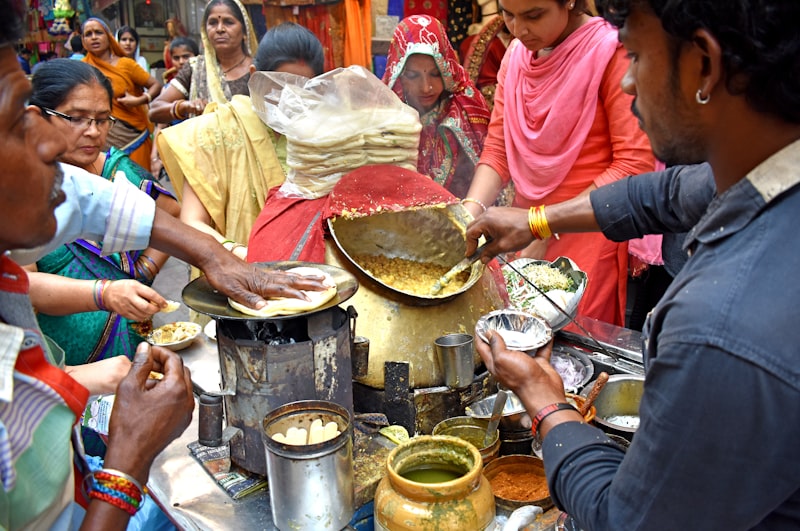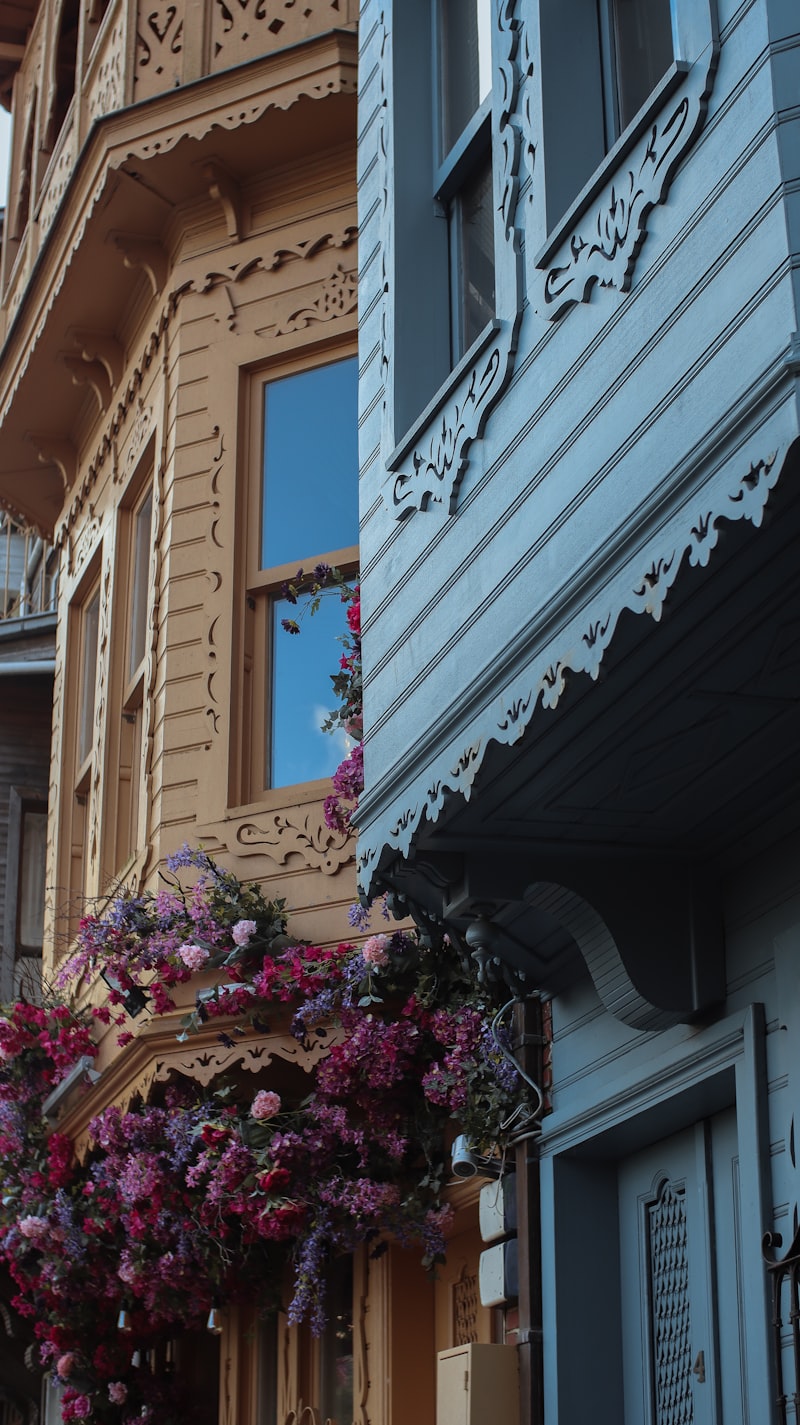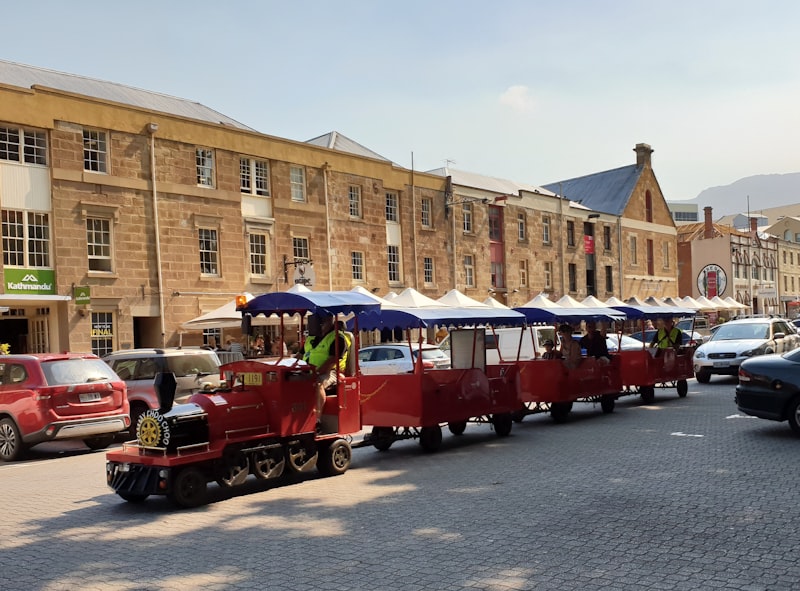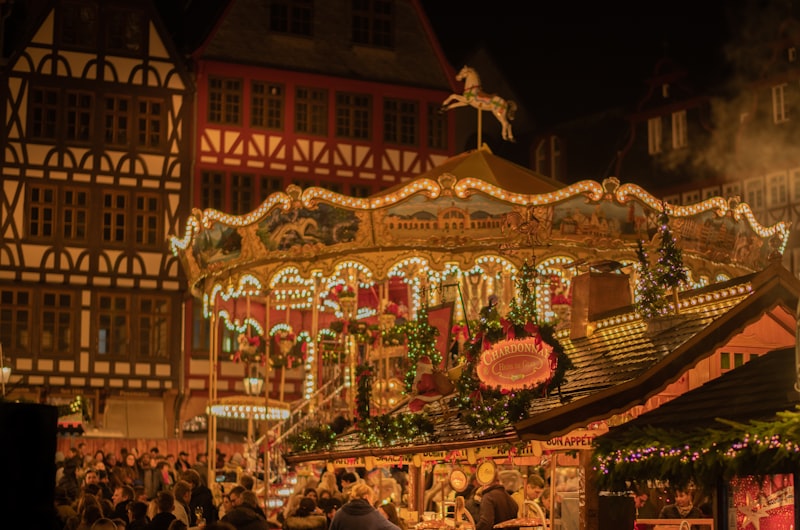
Imagine strolling through the bustling streets of Istanbul’s Grand Bazaar, where the scent of exotic spices mingles with the echoes of ancient merchants haggling over silks and carpets. Each corner reveals a new delight, from intricate jewelry to handmade ceramics, all steeped in stories of craftsmanship passed down through generations.
In Florence, Italy, the Mercato di San Lorenzo beckons with its stalls laden with fresh produce, local wines, and leather goods. Here, amid the Renaissance architecture, one can taste the flavors of Tuscany and feel the pulse of a city that birthed artistic revolution.
Venturing eastward, Kyoto’s Nishiki Market in Japan offers a sensory feast with its array of traditional foods and specialties. Known as “Kyoto’s Kitchen,” it’s a place where culinary heritage meets modern tastes, showcasing the essence of Japanese gastronomy in every bite.
Closer to home, London’s Covent Garden Market stands as a testament to urban renewal, blending historic charm with contemporary flair. Once a fruit and vegetable market, it now hosts artisanal crafts, street performers, and boutique shops, embodying the city’s dynamic spirit.
These marketplaces are more than mere commercial spaces; they are living museums where the past meets the present. They evoke a sense of wonder and discovery, inviting travelers and locals alike to immerse themselves in the sights, sounds, and flavors that define each unique destination.
Step into these historic marketplaces, and you step into history itself—a vibrant tapestry woven with threads of tradition, innovation, and the timeless allure of human connection.
Timeless Treasures: Exploring the World’s Oldest Marketplaces
Imagine strolling through the labyrinthine alleys of the Grand Bazaar in Istanbul, Turkey, where the scent of exotic spices mingles with the chatter of merchants. Established in the 15th century, this sprawling market remains a hub of activity, showcasing Turkish carpets, ceramics, and intricate jewelry that tell tales of Ottoman grandeur.
Across the Mediterranean lies the souks of Marrakech, Morocco, where narrow pathways lead to hidden courtyards brimming with handmade leather goods and vibrant textiles. Here, the rhythms of daily life intertwine with Berber traditions, creating an unforgettable sensory experience for visitors.
Venture further east to Xi’an, China, home to the legendary Silk Road and the bustling Muslim Quarter. Amidst the historic pagodas and ancient city walls, the bustling markets offer a feast for the senses—from steaming bowls of Xi’an noodles to delicate silk garments crafted by skilled artisans.
In India, the spice-scented lanes of Chandni Chowk in Delhi beckon with their kaleidoscope of colors and flavors. Dating back to the 17th century, this chaotic marketplace remains a vibrant melting pot of cultures, where vendors peddle everything from glittering jewelry to traditional Indian sweets.
Each marketplace tells a story of resilience and adaptation, surviving wars, conquests, and the passage of time. They are not just places to buy and sell goods but vibrant hubs of cultural exchange where traditions are preserved and passed down through generations.
As you wander through these ancient marketplaces, you are transported back in time, connecting with the rich tapestry of human history. The legacy of these markets continues to endure, offering visitors a glimpse into the past while remaining vital centers of commerce and community in the present day.
From Bazaars to Boutiques: A Journey Through History’s Shopping Hubs
Imagine wandering through the ancient souks of Marrakech, where narrow alleys brim with the aroma of spices and the allure of handcrafted treasures. Here, bargaining is an art form, and every purchase comes with a story woven into its fabric. Centuries ago, these markets were the lifeline of commerce, where merchants from distant lands converged to exchange goods and ideas, creating a melting pot of cultures.
Fast forward to the opulent boutiques of Paris, where haute couture reigns supreme. Each storefront on the Champs-Élysées tells a tale of fashion’s evolution, from the avant-garde innovations of Coco Chanel to the timeless elegance of Christian Dior. Here, shopping is not merely a transaction but a pilgrimage for the fashion-conscious, seeking pieces that transcend trends and embody craftsmanship.
Across the continents, from the bustling Grand Bazaar in Istanbul to the labyrinthine markets of Delhi, shopping hubs continue to evolve. They adapt to modernity while preserving their intrinsic charm—a testament to resilience in an ever-changing world. In Tokyo’s Ginza district, futuristic malls redefine luxury, blending technology with tradition in a seamless fusion.
The journey through history’s shopping hubs is more than a quest for goods; it is a voyage through time, where each market, bazaar, and boutique has left an indelible mark on the fabric of society. These hubs are not just places to shop but living archives of human ingenuity, creativity, and commerce. They invite us to explore, indulge, and marvel at the kaleidoscope of human enterprise that spans millennia.
Whether you stroll through the cobblestone streets of Florence, where artisans breathe life into leather goods, or navigate the labyrinth of stalls in Bangkok’s Chatuchak Market, the allure of these shopping hubs is universal. They beckon travelers and locals alike to immerse themselves in a sensory experience where history, culture, and commerce converge in a symphony of sights, sounds, and scents.
As we traverse the globe, from ancient markets to modern boutiques, one thing remains certain: the allure of shopping hubs transcends time and borders, offering a window into the soul of every society they inhabit. Each visit is a chance to uncover treasures, forge connections, and witness the ongoing saga of human interaction and exchange—making every shopping expedition a journey through history itself.
Reviving Heritage: Preserving Cultural Identity Through Ancient Markets

Imagine strolling through narrow alleys lined with stalls bursting with color—spices from distant lands, handcrafted textiles that whisper stories of skilled artisans, and savory street foods that tempt even the most disciplined taste buds. Each market is a tapestry woven with threads of history, where merchants, traders, and locals converge in a dance as old as time itself.

The charm of these markets lies not just in their products but in their ability to transcend generations. They are time capsules preserving cultural practices and traditions that might otherwise fade into obscurity. From the labyrinthine souks of Marrakech to the bustling bazaars of Istanbul, these markets serve as anchors, grounding communities in their rich past while embracing the present.
What makes these markets truly remarkable is their adaptability. While they cherish traditions, they also evolve, blending ancient customs with modern influences. It’s a delicate balance—preserving authenticity while embracing innovation—that ensures these markets remain relevant and thriving in a fast-paced world.
Visiting these markets isn’t merely a shopping expedition; it’s a sensory journey. The sights, sounds, and smells transport you to a different time and place, offering a visceral connection to the culture they represent. It’s an experience that sparks curiosity, fosters understanding, and leaves an indelible mark on those who wander their bustling aisles.
In essence, ancient markets aren’t just economic entities; they’re cultural lifelines. They embody the spirit of preservation, nurturing a community’s identity while celebrating its diversity. As we strive to embrace progress, let us also cherish these timeless treasures that remind us of who we are and where we come from—places where history, tradition, and the modern world converge in a harmonious dance.
Hidden Gems: Unearthing Forgotten Marketplaces Across Continents
Ever wondered about the treasures that lie hidden in the heart of bustling cities and quiet towns alike? Journey with us as we uncover some of the world’s most intriguing and forgotten marketplaces, where history blends seamlessly with everyday life.

Imagine strolling through narrow alleys adorned with vibrant stalls, each offering a unique glimpse into local culture and traditions. These hidden gems aren’t just markets; they’re time capsules that transport you to eras long past. From the aromatic spices of Marrakech’s souks to the antique curiosities of Tokyo’s flea markets, every corner holds a story waiting to be told.
What makes these marketplaces truly remarkable is their ability to endure amidst modernity, preserving age-old practices and craftsmanship. Whether you’re hunting for handmade textiles in the bazaars of Istanbul or exploring quaint farmer’s markets in rural France, there’s an undeniable charm that captures the essence of community and commerce.
In these bustling hubs, every purchase becomes a conversation piece, a testament to the artisans and traders who keep traditions alive. It’s not just about shopping; it’s about connecting with the soul of a place through its marketplaces. Who knows what treasures you might unearth—a vintage trinket that sparks nostalgia, a local delicacy that tantalizes the taste buds, or simply a friendly exchange with a vendor who shares their passion for their craft.
As you wander through these hidden gems scattered across continents, let curiosity be your guide. Embrace the serendipity of discovery, where every turn reveals a new surprise. These marketplaces are more than markets; they’re cultural crossroads where history meets the present, offering a glimpse into the rich tapestry of human experience. Join us on this journey of exploration and rediscover the magic of forgotten marketplaces around the globe.
This article aims to capture the reader’s imagination and curiosity while highlighting the unique charm and cultural significance of hidden marketplaces worldwide.
Market Miracles: How Ancient Trade Centers Shaped Modern Economies
In antiquity, cities like Rome, Alexandria, and Constantinople were not merely geographical locations but crucibles of economic miracles. Take Alexandria, for instance. Nestled on the Nile Delta, this Egyptian city became a beacon of trade, attracting merchants from Europe, Africa, and Asia. Its famous Great Library housed a wealth of knowledge that fueled advancements in science, medicine, and philosophy—a true testament to the transformative power of trade.
The Silk Road, another marvel of ancient commerce, connected the East and West, spanning thousands of miles across deserts, mountains, and plains. Caravans carrying silk, spices, and precious metals traversed this ancient network, forging cultural exchanges that transcended borders and shaped the economies of China, India, Persia, and Rome.
But what made these marketplaces true miracles of their time? It was not just the goods exchanged but the ideas and innovations that flourished within their walls. In Rome, the Forum Romanum was not only a commercial hub but a political and social center where citizens gathered to discuss law, politics, and governance—a place where the pulse of the empire could be felt.
Ancient trade centers were catalysts for growth, driving technological advancements such as improved shipbuilding and navigation techniques. The Phoenicians, masters of maritime trade, ventured beyond the Mediterranean, establishing trade routes that linked ancient civilizations from Mesopotamia to Greece and beyond.
As we marvel at the complexities of our modern economies, it’s essential to remember their humble beginnings in the bustling marketplaces of antiquity. The lessons learned from these ancient trade centers—innovation, cultural exchange, and the pursuit of knowledge—are still relevant today, shaping the interconnected global economy of the 21st century.
The Soul of Commerce: Tales from Centuries-Old Market Streets
Walking through these time-honored market streets is like stepping into a living history book. The aromas of exotic spices mingle with the chatter of vendors calling out their wares in lively banter. It’s a sensory journey where every corner reveals something new—a hidden courtyard adorned with intricate mosaic tiles or a tiny shop brimming with handmade treasures.
These markets are not just places to buy and sell; they are community gathering spots where locals and tourists alike come to connect. Imagine sipping freshly brewed coffee at a corner café while watching the bustle of shoppers negotiating prices with animated gestures. It’s a scene that encapsulates the essence of human interaction and commerce.

Moreover, market streets are melting pots of cultures, reflecting the diversity of the cities they inhabit. From the grand bazaars of Istanbul to the narrow souks of Marrakech, each market tells a unique tale of its city’s heritage. They are living monuments that have withstood the test of time, evolving yet retaining their core identity.
In essence, market streets are more than just economic hubs; they are living, breathing entities that define the pulse of a city. They embody resilience, adaptability, and the spirit of entrepreneurship across generations. Whether you’re a traveler seeking authentic souvenirs or a local in search of daily provisions, market streets offer an unforgettable experience—an immersion into the soul of commerce itself.
Frequently Asked Questions
What types of goods were typically sold in ancient marketplaces?
Learn about the types of goods commonly traded in ancient marketplaces, ranging from essential foodstuffs like grains, fruits, and vegetables to artisan crafts such as pottery, textiles, and metalwork. Explore how these markets facilitated cultural exchange and economic growth in ancient societies.
What are historic marketplaces and why are they significant?
Discover the significance of historic marketplaces with our concise FAQ. Learn why these places hold cultural and economic importance through centuries-old traditions, fostering community connections and preserving local heritage.
How can I visit famous historic shopping areas around the world?
Discovering famous historic shopping areas worldwide is an enriching experience. Learn how to plan your visits efficiently, exploring iconic markets and districts that blend history with vibrant culture. From London’s Portobello Road to Istanbul’s Grand Bazaar, discover tips for navigating these timeless destinations.
Are there guided tours available for historic marketplaces?
Yes, guided tours for historic marketplaces are widely available. These tours offer curated experiences led by knowledgeable guides who provide insights into the marketplace’s history, significance, and cultural context. They are ideal for visitors seeking to deepen their understanding and appreciation of these vibrant historical sites.
How have historic marketplaces influenced modern shopping trends?
Discover how historic marketplaces have shaped today’s shopping habits. Explore their impact on modern consumer behavior and retail practices.



